Reader advisory: Some accounts of violence in this story contain explicit details and strong language that some may find upsetting.
Carmen Guerrero spent less than nine hours with her new cellmate before he murdered her.
Reader advisory: Some accounts of violence in this story contain explicit details and strong language that some may find upsetting.
Carmen Guerrero spent less than nine hours with her new cellmate before he murdered her.
Miguel Crespo had told corrections officers at Kern Valley State Prison that he would kill Guerrero, a transgender woman who wore her hair long and tweezed her eyebrows, if he was forced to share a cell with her, according to an inmate who witnessed the incident and testified at Crespo’s murder trial.
When Crespo moved in, Guerrero, 48, began filling out a form that prosecutors believe she intended to use as part of a transfer request.
“He stated he is not compatible with me. I’m worried to be raped again,” Guerrero wrote.
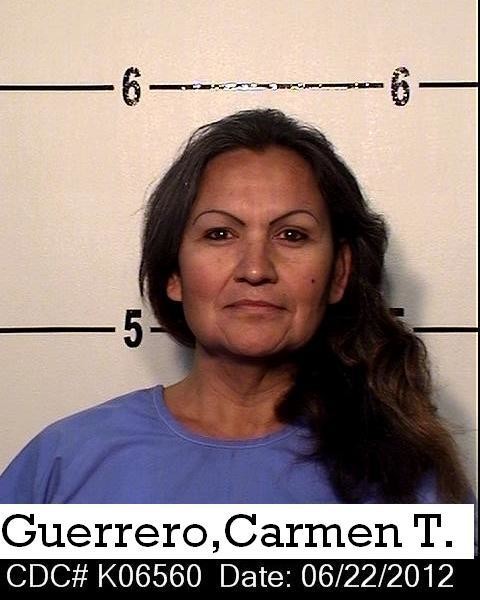
Prison guards told Crespo the move would be temporary, the other inmate testified. Later that night, after Crespo strangled Guerrero, he called the guards over and said, “You didn’t believe me. I told you I was gonna kill [Guerrero],” according to the inmate.
Crespo, who told the trial judge he had previously attacked a gay prisoner, argued in court he shouldn’t have been housed with Guerrero. In December, the judge sentenced Crespo to death for the 2013 murder.
The California Department of Corrections and Rehabilitation would not comment specifically on the Guerrero case, but said it is “committed to addressing the safety concerns” of transgender, intersex and nonbinary prisoners. The department also said it introduced a screening form in 2017 intended to prevent potential abusers and victims from residing in the same cell.
But advocates backing a bill pending in the California State Legislature on safe housing for transgender prisoners said the killing was an example of how CDCR has failed transgender inmates. Senate Bill 132 would allow prisoners to live with those who match the gender they identify with — not the one they were assigned at birth.
“[Crespo] should never have been in the cell with the girl,” said Fatima Shabazz, a former inmate and transgender prisoner activist who is working on SB 132. “The whole point in the bill is to prevent things like this from happening.”
Shawn Meerkamper, an attorney at the Transgender Law Center, agreed the pair should not have been housed together and said the U.S. Constitution requires prisons to protect inmates they know to be in danger.
“It’s hard to get a lot clearer than having someone saying, ‘I am going to kill this person,’ and then doing it,” Meerkamper said.
Transgender inmates have long been identified as a vulnerable population. Neither California nor the federal government tracks prison homicides by gender identity, but the most recent federal data, from 2011-12, found 40% of transgender prisoners reported being the victim of a sexual assault within the previous 12 months — 10 times the percentage of non-transgender inmates.
SB 132 is the latest in a growing number of efforts nationwide to drive those numbers down and make prison less overtly hostile for transgender people. Spurred by advocates, inmates, state lawmakers and some corrections officials, the initiatives include gender-affirming housing, medical care, clothing and other services.
“We are seeing a trend towards a greater understanding of the need to provide humane housing and treatment of transgender people who are incarcerated,” said Jennifer Levi, director of the Transgender Rights Project for advocacy group GLBTQ Legal Advocates & Defenders (GLAD). “There’s also a growing understanding within corrections systems of the need to respond to transgender people humanely.”
Still, the situation portrayed by transgender prisoners and their advocates is complex, with the acknowledgment of progress tempered by violent incidents and allegations they say are indicative of how far the penitentiary system still has to go in providing a safe environment.
“CDCR is like trying to push a boulder uphill,” said one inmate, Ava Fey. “There’s that inertia principle where once it’s stopped and it’s happy with how it is, it does not want to change or move.”
At the California Medical Facility, a state prison in Vacaville, one of the new transgender-related accommodations is a workout club.
Last summer, a group of transgender women, who were wearing sports bras, leggings, shorts and tank tops, shot hoops, walked laps, peddled on stationary bikes and paused to gossip in what looked like an ordinary high school gym. The women are among the state’s 1,200 inmates who identify as transgender, gender-nonconforming or intersex — a little less than 1% of the prison population.
“I fought constantly and constantly with staff to do something for the girls here at CMF,” inmate Jazzie Paradize Scott, serving time for second-degree robbery, said to a soundtrack of hip-hop and buzzing black fans. “I wanted them to have a safe place where they can wear their shorts, their bras and their tops and their little tennis shoes and come out and just be ladies and be able to work out.”

In a circle of women stretching, Mark Peaches Cates, 58, said she’d never had the chance to exercise with just transgender women. Gym time with men had made her uncomfortable.
“You couldn’t be yourself,” said Cates, who is in prison for second-degree murder.
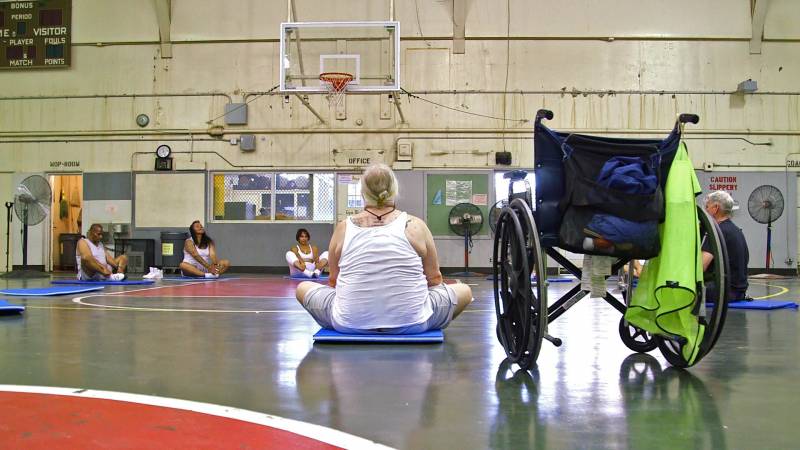
In California, many transgender-related services have been implemented after an inmate sued the state prison system over its refusal to provide her with gender-affirmation surgery.
CDCR settled with the prisoner, Shiloh Heavenly Quine, in 2015, agreeing to perform the surgery and becoming the first prison system in the nation to set guidelines for other transgender inmates to seek approval for the operation. As of September, CDCR said at least four prisoners had undergone the surgery. About 175 have applied and 19 have been approved as of November, according to the department.
The judge in the Quine case also ordered California prisons to make available to transgender inmates such gender-affirming items as clothing, jewelry and makeup.
The benefits of that order could be seen at a transgender support group at the prison in Vacaville, where women put makeup on one another and talked about having to previously resort to DIY tricks in order to fashion cosmetics — using pastels, wax pencils, Kool-Aid, cocoa and coffee.
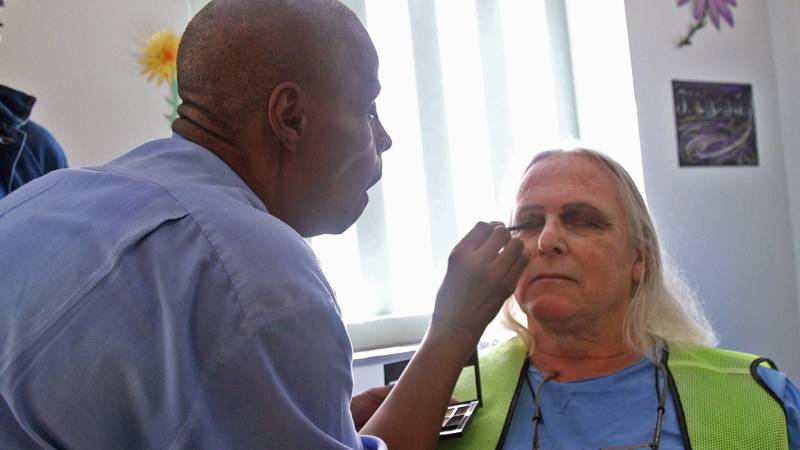
One hack, according to 59-year-old Cary Smith: Running a Q-tip over baby oil pooled on a Colgate toothpaste box. The result: pink eyeshadow.
Wearing makeup “makes me feel like I’m a step closer to being who I really am. … I feel like I can keep going,” said Smith, who is serving time for assault with a deadly weapon.
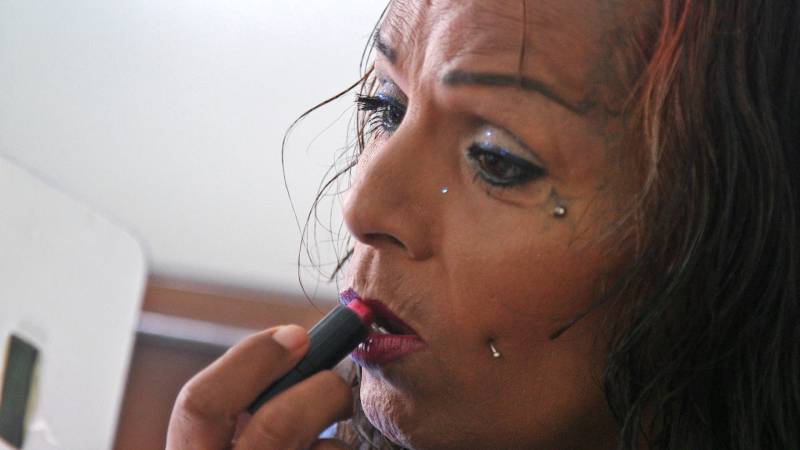
CDCR said it doesn’t track violence in California prisons for any subset of inmates, including those who are transgender. A rare data point comes from a 2007 study that included interviews with 39 transgender prisoners at a single state prison: 59% reported being sexually assaulted, 13 times the rate for non-transgender prisoners.
“There was a time when being a transgender in prison, it was pretty hopeless. It was dark. You were here to serve others,” Cary Smith said.
The transgender prisoners at CMF had plenty of traumatic incidents to recount. Yekaterina Wesa Patience said she was playing dominoes and smoking a joint with her cellmate in Pelican Bay State Prison in the late 1990s when he suddenly got on top of her and raped her. That sent her into the closet for nearly 20 years.
“I immediately cut all my hair off, kept my head bald … I grew a mustache and a goatee, and tried to adopt the hardest walk I could on the yard,” said Patience, imprisoned for first-degree murder and other crimes. “I was terrified of it happening again, and I was not going to be out for somebody else to do it.”
Still, Patience said, she was raped again, about 18 months later at Mule Creek State Prison. (KQED could not verify most of the alleged attacks reported by Patience and the other prisoners in this story; CDCR said it investigates allegations, but federal law prevents it from sharing details about specific cases.)
David Bella Birrell, imprisoned for first-degree murder, also said she’d been sexually assaulted in prison. “They had a motto back in those days: It was either fight or fuck.”
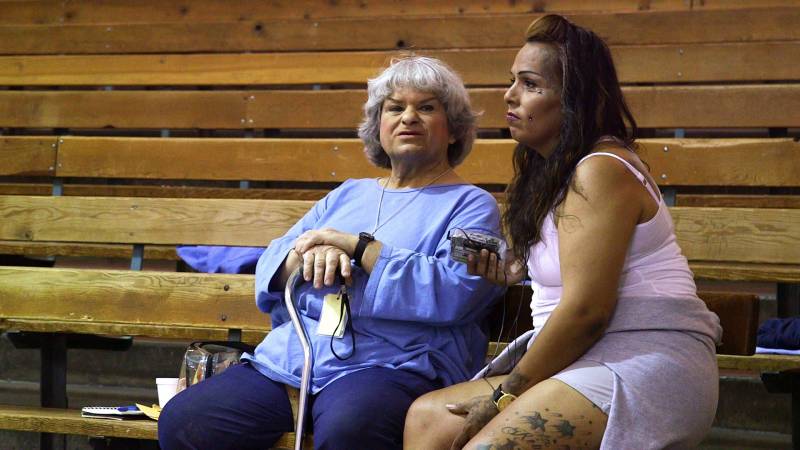
In recent years, a flurry of laws and lawsuits, many from prisoners like Quine, have forced systemic changes in the way penal systems in some states treat transgender prisoners. In Illinois, North Carolina and Massachusetts, transgender inmates have won in court the right to transfer to women’s prisons.
In recent months, transgender prisoners in Colorado brought a class action against state prison officials over a lack of safe housing; and three transgender inmates in Texas filed a lawsuit seeking to legally change their names.
In California, a law allowing prisoners to change their gender and name took effect in late 2018. SB 132, the California bill that would let transgender inmates choose, with some exceptions, whether to be imprisoned in a men’s or women’s facility, is similar to measures enacted in Connecticut and Massachusetts.
“Transgender inmates are some of the most marginalized members of society,” said state Sen. Scott Wiener, D-San Francisco, SB 132’s sponsor. “They need more support. The housing aspect is one piece of the puzzle. And it’s a really significant one.”
Passage of Wiener’s bill would be “lifesaving,” said Bamby Salcedo, a Los Angeles-based transgender activist who spent 14 years in California jails and prisons. Salcedo said the measure would allow transgender inmates to do their time “away from harassment and violence.”
The bill passed the state Senate last year, but did not get a floor vote in the Assembly. Wiener, who put the measure on hold until this year to discuss the issue with prisoners, believes it will pass.
Wiener’s bill would also bring California in line with federal standards laid out in the Prison Rape Elimination Act, or PREA. These regulations, which took effect in August 2012, recognize transgender inmates as a vulnerable population and stipulate that transgender housing assignments must ensure prisoners’ health and safety. Audits for each facility must be conducted every three years.
In 2017, a federal audit found that CDCR’s policy of housing transgender inmates based solely on their biological sex ran afoul of PREA guidelines and that the department didn’t take into account the prisoners’ own views about their safety.
In response, CDCR said, it implemented a screening tool used to assess risk of victimization. The agency also said its current housing policy requires every inmate receive a case-by-case review of where they are imprisoned, with no restriction on living in a men’s or women’s facility based solely on anatomy.
“We recognize that when we’re dealing with our transgender men and women, that our staff need much more guidance when they’re looking at what appropriate housing looks like,” said Amy Miller, associate director of CDCR’s Female Offender Programs and Services, adult division.
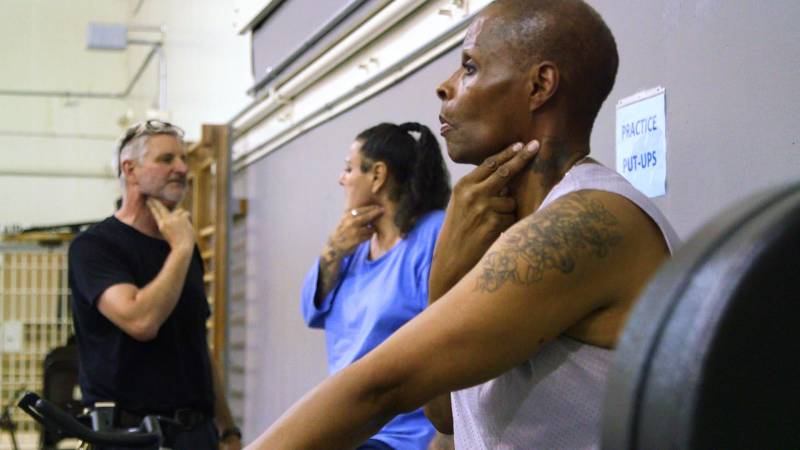
Still, CDCR couldn’t point to any transgender prisoners, besides the few who had undergone gender-affirmation surgery, who had been allowed to switch facilities. The department said it doesn’t track that information.
Harper Jean Tobin, policy director at the National Center for Transgender Equality, said while some states have improved their rules on transgender housing, frequently the policies “only exist on paper.”
“Today, contrary to the federal PREA rules, most transgender prisoners continue to be housed automatically with the sex they were assigned at birth, which is often dangerous for them,” Tobin said.
At CMF, transgender women had mixed reactions to the idea of changing living facilities.
Birrell, 67, called Wiener’s housing bill “insanity” and worried about potential conflicts with the existing female prisoner population. She already likes the community resulting from CDCR’s present system of transgender hubs — 14 prisons that offer special medical and mental health care.
But inmate Ava Fey said she would likely “run” to a women’s prison for reasons of safety. Living with women would also offer something that’s eluded her for decades: women whom she could emulate.
“I’ve been hiding so long — the mannerisms — I’ve kind of tucked them in and locked it away,” said Fey, who was convicted of first-degree murder.
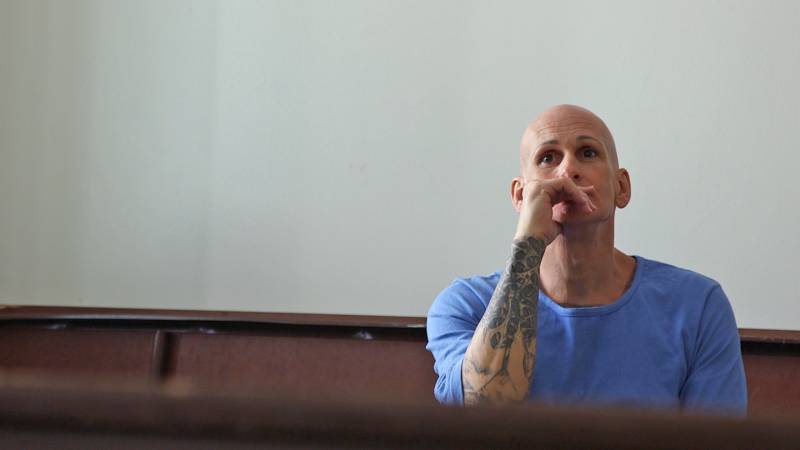
Yekaterina Wesa Patience, 44, said she’d “love” to transfer to a women’s prison as well: “I think that would eliminate a lot of the problems of being sexually assaulted or being raped, pressured.”
“You just never feel safe here,” she said. “You never feel like you can let your guard down.”
Other women, many who live on their own in single cells, said they were fine staying at CMF. Jazzie Paradize Scott, 47, who said she lives in a dorm with 150 men and a few other transgender women, sees the benefits of moving to a women’s prison, but views her current housing choice as a form of activism.
“I want them to be able to see me for who I [am],” she said. “I thought it would be a good idea for me to come out and mingle — not just for the trans women and to show that we can conquer even in the dorm living situation — but just to be able to exist with the males in CMF.”
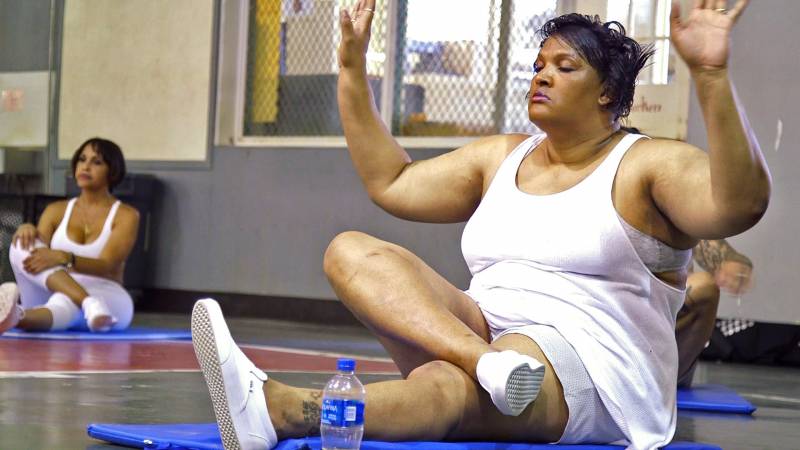
Transgender men at the Central California Women’s Facility in Chowchilla had a different take.
“I already fight for my life in this prison. How do you think I’m going to fare in a male institution even before surgery?” said 52-year-old Diamond Vargas, serving time for assault with a semiautomatic firearm. “There’s not a hormone shot in the world [we could take so that] we’re going to make it.”
Shiloh Heavenly Quine, 60, whose lawsuit spurred many of the changes around incarcerating transgender inmates in the state, is one of a few prisoners to have lived in both men’s and women’s prisons. Despite experiencing some bullying that she said landed her in administrative segregation, she feels much safer in the women’s facility.
“People get sliced every now and then. … People get hit with locks every now and then, you have that, but all in all it’s pretty mellow here,” said Quine, who is incarcerated at CCWF for first-degree murder. “This is easy time. I call it Prisneyland.”
California prison officials say they’re trying to stay part of the national conversation on transgender issues. Besides creating support groups, changes in recent years include directives to prison staff to use preferred pronouns and the hosting of events like a post-release transgender resource fair.
After the Quine settlement, CDCR polled transgender inmates about preferred cosmetic and hygenic items and then mandated that prison canteens carry them. Options for clothing have expanded: Available items now include scoop-necked shirts for transgender women and chest-flattening binders for transgender men.
“The sentence in coming to state prison, that’s the punishment. Right?” said CDCR’s Miller. “You shouldn’t be required to identify a different way simply because you committed a crime and you’ve been given a sentence.”
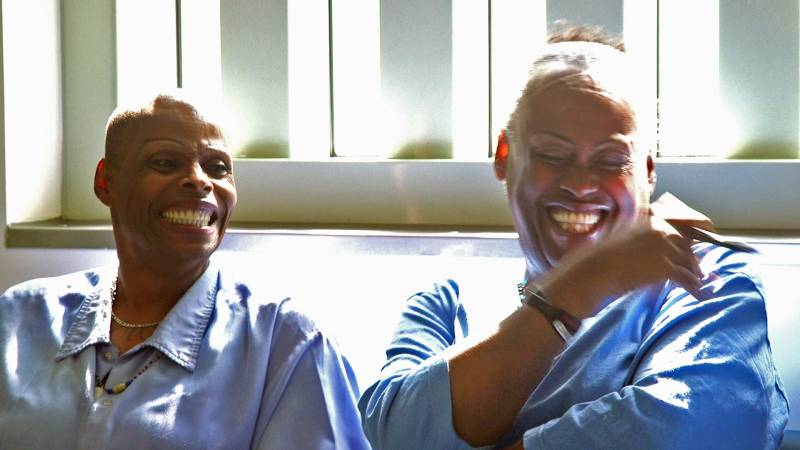
In the meantime, a number of the transgender prisoners at CMF said conditions for them have improved. Birrell said the situation took a positive turn in the mid-2000s: “It’s been a long process. But things are a lot better today than they have been.”
Advocates said they expect that lawsuits and laws will continue to force changes.
“That will have to continue because of just so much pervasive lack of information across correction systems,” said Levi of GLAD. “But I’m also hopeful that won’t be the exclusive way in which we see things move.”
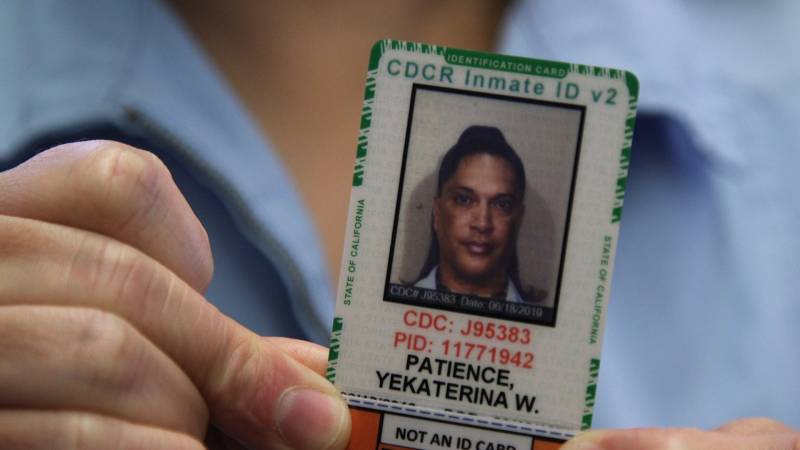
Despite these changes, transgender prisoners have continued to allege mistreatment.
“Somebody hit me in the side and then just choked me out, just choked me out,” Fey said of an attack earlier this year in the kitchen at CMF, which she attributed to her gender identity. Fey provided KQED with documentation of the attack.
A transgender woman and a gender-fluid person have filed federal lawsuits alleging they were physically assaulted and verbally harassed by officers in 2017 at CCWF because of their gender identity (CDCR declined to comment on pending litigation). And a federal prison audit in 2018 noted reports from transgender inmates in Salinas Valley State Prison that they had been sexually abused and “targeted” because of their gender identity.
Also at Salinas Valley State Prison, a transgender woman was found dead in her cell in April 2017, with a pencil shoved through her ear and down her neck. The Monterey County coroner’s office said the cause of death is undetermined; the county’s district attorney, Jeannine Pacioni, said it had rejected the case due to lack of evidence indicating a murder.
At CMF, a transgender woman, Candice Destiny-Rene Love, alleged in a federal lawsuit that she was slashed in the head and face with a box cutter by a former boyfriend in 2016, and raped at the California Substance Abuse Treatment Facility and State Prison in Corcoran a year earlier.
Love, 34, accuses CDCR of failing to protect gay and transgender inmates and of not giving her adequate medical care after the 2016 attack led to the development of keloids, bulbous folds of scar tissue she said have caused painful nerve damage and hearing loss. CDCR declined to comment.
“I love who I am and I love being me, but after the rape and attack, I wondered, if I wasn’t trans, would I still be going through what I’m going through? I don’t think so,” wrote Love, who is serving time for vehicle theft, in a letter to KQED.
As the prison system attempts to adapt to the transgender rights movement in society at large, a number of transgender prisoners can finally transition, too.
After nearly two decades closeted in prison, Patience came out as transgender in 2015.
Despite hearing that some transgender women had difficulties going into a women’s prison, she said: “It still wouldn’t detract or turn me away from trying to be the complete me.”
Fey feels the same.
“Somebody has got to be the forerunner for this stuff. If somebody goes in and acts right … it opens the door for the next girl behind you. And after a while, if you’re acceptable, you’ll be accepted,” Fey said.
For Carmen Guerrero’s family, there isn’t much solace. At her killer’s trial, her mom, Mary Talamantez Flores, testified that the youngest of her six kids liked to bake, and that she was beloved by an older sister, who watched out for her at school.
While in prison, Guerrero, serving time for second-degree murder, often wrote home and seemed OK, Flores said. She learned via telegram that Guerrero had been killed.
“My baby was gone,” she said.
Guerrero’s boyfriend, Jonathan Wilson, also an inmate, said he has struggled with grief and depression after her death. At the trial, he confirmed her handwriting on the form where she said she feared being raped by her killer. What she wrote told him she was pleading for her life.
Wilson wrote KQED in August: “Carmen died being who she wanted to be as a woman and it cost her her life.”
KQED News’ Monica Lam contributed to this report.
Questions? Comments for the reporter? Contact her: mleitsinger@kqed.org

To learn more about how we use your information, please read our privacy policy.